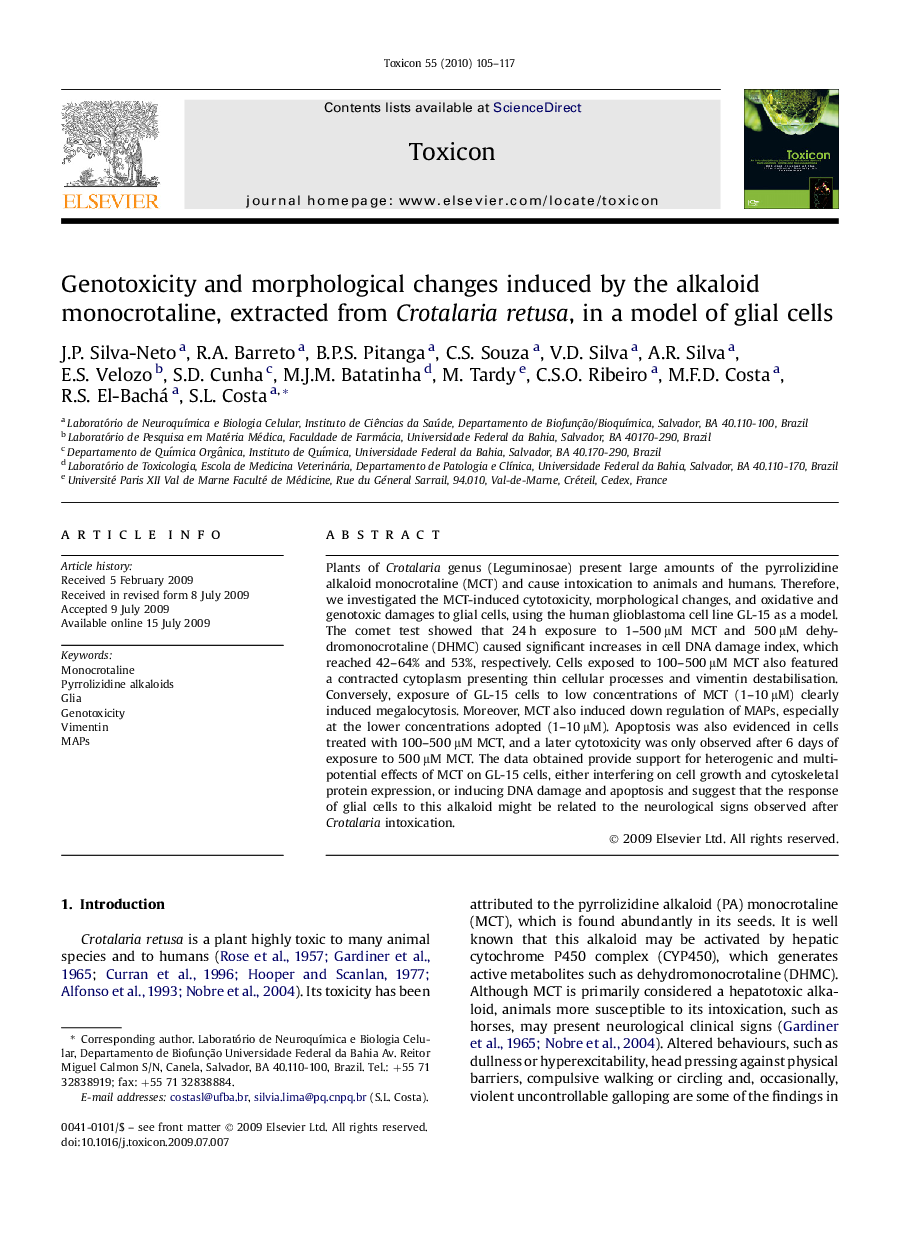| Article ID | Journal | Published Year | Pages | File Type |
|---|---|---|---|---|
| 2065453 | Toxicon | 2010 | 13 Pages |
Plants of Crotalaria genus (Leguminosae) present large amounts of the pyrrolizidine alkaloid monocrotaline (MCT) and cause intoxication to animals and humans. Therefore, we investigated the MCT-induced cytotoxicity, morphological changes, and oxidative and genotoxic damages to glial cells, using the human glioblastoma cell line GL-15 as a model. The comet test showed that 24 h exposure to 1–500 μM MCT and 500 μM dehydromonocrotaline (DHMC) caused significant increases in cell DNA damage index, which reached 42–64% and 53%, respectively. Cells exposed to 100–500 μM MCT also featured a contracted cytoplasm presenting thin cellular processes and vimentin destabilisation. Conversely, exposure of GL-15 cells to low concentrations of MCT (1–10 μM) clearly induced megalocytosis. Moreover, MCT also induced down regulation of MAPs, especially at the lower concentrations adopted (1–10 μM). Apoptosis was also evidenced in cells treated with 100–500 μM MCT, and a later cytotoxicity was only observed after 6 days of exposure to 500 μM MCT. The data obtained provide support for heterogenic and multipotential effects of MCT on GL-15 cells, either interfering on cell growth and cytoskeletal protein expression, or inducing DNA damage and apoptosis and suggest that the response of glial cells to this alkaloid might be related to the neurological signs observed after Crotalaria intoxication.
